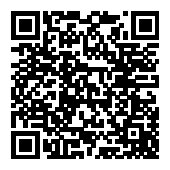我们博士生郑桂贤、张书维教授与合作者于International Journal of Disaster Risk Reduction发表学术论文
太阳集团tyc8722博士生郑桂贤(第一作者)、张书维教授(通讯作者)与合作者发表的论文“How risk communication impacts public psychology and behaviors during compound disasters: Data from flooding and COVID-19 disasters in China”近日于International Journal of Disaster Risk Reduction发表。
既有研究表明,在单一灾害事件中,风险沟通能够改善公众的心理状态和行为。然而,在复合灾害场景中,由于公众风险感知的叠加以及负面情绪的强化,风险沟通的效果和机制可能会有所不同,这可能导致更难以预测的行为反应。本研究以中国安徽省2020年同时经历洪涝灾害与COVID-19疫情的379名受灾民众为样本,运用保护性行动决策模型(PADM)建立理论假设,并通过结构方程模型进行验证。研究发现:(1)在复合灾害场景中,充分的风险沟通能够显著削弱受灾者的焦虑情绪并促进其疏散行为;(2)反刍思维(对既往灾害的反复回想思考)在风险沟通与焦虑情绪、疏散行为间起中介作用;(3)复合灾害风险感知负向调节风险沟通对反刍思维的影响。这些发现揭示了风险沟通在复合灾害情境中对受灾者心理和行为产生影响的复杂机制。
Abstract
Prior studies have revealed that risk communication improves public psychology and behaviors during single disaster events. However, its effectiveness and mechanisms in compound disaster scenarios may differ due to compounded public risk perceptions and the reinforcement of negative emotions, which could lead to more unpredictable behaviors. This study surveyed a sample of victims (N = 379) who experienced both floods and the COVID-19 pandemic in 2020 in Anhui Province, China. We applied the protective action decision model (PADM)to make assumptions and used a structural equation model to examine them. We found (1) that adequate risk communication could significantly improve victims’ anxiety and evacuation behavior in compound disaster scenarios, (2) that rumination (repeated thinking of previous disasters) played a mediating role between risk communication and anxiety and evacuation behavior, and (3) that compound disaster risk perception negatively moderated the effect of risk communication on rumination. This study identified a new emotional variable—rumination—in a compound disaster scenario that could improve the effect of risk communication on victims’ psychology and behaviors. However, the compound risk perceptions negatively moderated this effect. These findings reveal the complex mechanisms by which risk communication can impact victims’ psychology and behaviors in compound disaster scenarios.



